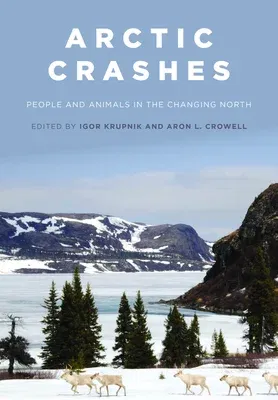This volume is the key outcome of the Arctic Crashes project, "Arctic
People and Animal Crashes: Human, Climate and Habitat Agency in the
Anthropocene." This project was implemented during 2014-2016 by a team
of scholars at the Smithsonian Institution's Arctic Studies Center in
collaboration with their colleagues and indigenous partners from the
U.S., Canada, Denmark, Greenland, and the Netherlands, and was supported
by the Smithsonian Grand Challenges Consortia grant. The Arctic Crashes
team introduced a new vision to explore human-animal-climate
interactions, including rapid animal declines ("crashes") in the North
that--unlike earlier top-down models that tied changes in species'
abundance and ranges to alternating warmer and cooler, or high ice/low
sea-ice regimes across the polar zone--analyzed such relations primarily
at regional and local scale. This approach is closer to the Arctic
peoples' traditional view that animals, like people, live in "tribes"
and they could "come and go" according to their relations with the local
human societies. As Arctic climate changes and climate/sea-ice/ecotone
boundaries shift, we increasingly observe diverse responses by people
and animals to environmental stress. In some species we can also
document the sustained effects of commercial overexploitation during the
seventeenth to twentieth centuries, which varied across subpopulations.
The emerging record may be best approached as a series of localized
human-animal disequilibria ("crashes") interpreted from different angles
by population biologists, Arctic indigenous people, and anthropologists,
rather than top-down climate-induced collapses. This new understanding
also highlights varying rates of change--in the physical, animal, and
human domains. Besides six keystone polar game species (the Pacific and
Atlantic walrus, harbor seal, harp seal, bowhead whale, and caribou) the
volume examines the status of polar bear and narwhal in the Canadian
Arctic, Pribilof Island fur seal, and Atlantic cod in Greenland,
presenting a diversity of historical, archaeological, evolutionary, and
cultural/spiritual perspectives on Arctic "crashes."

